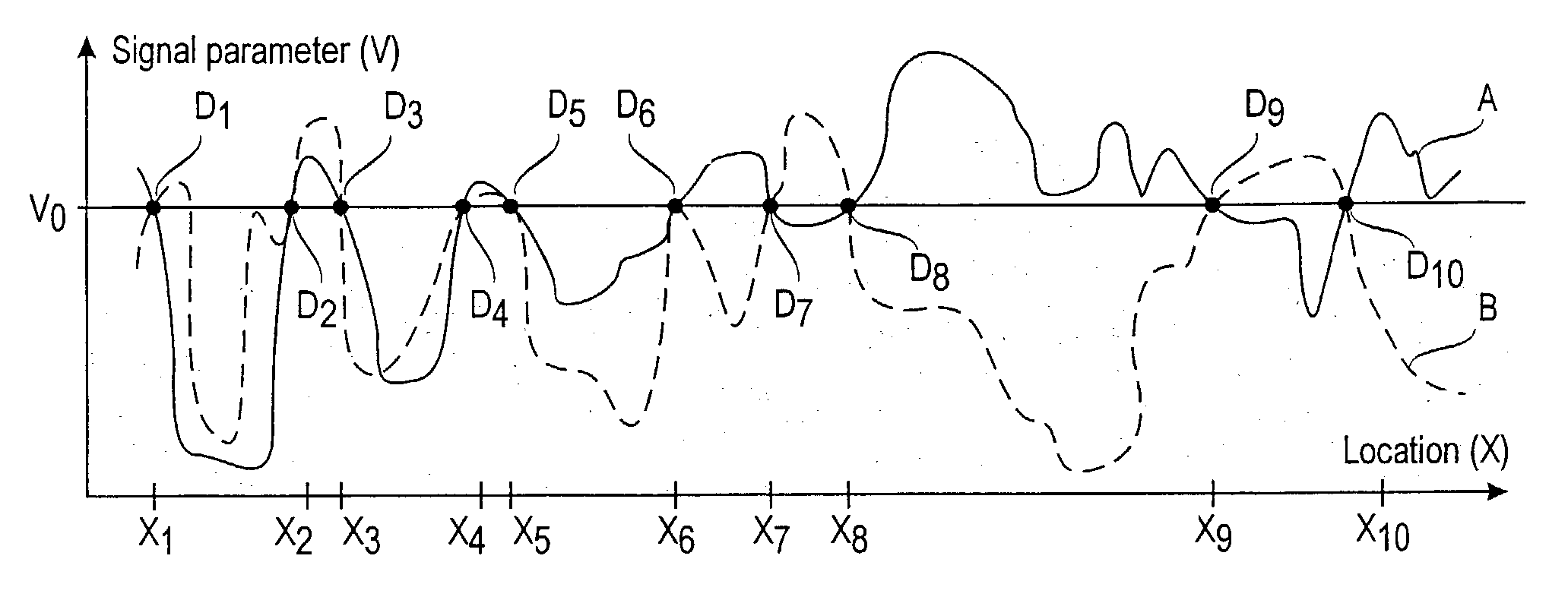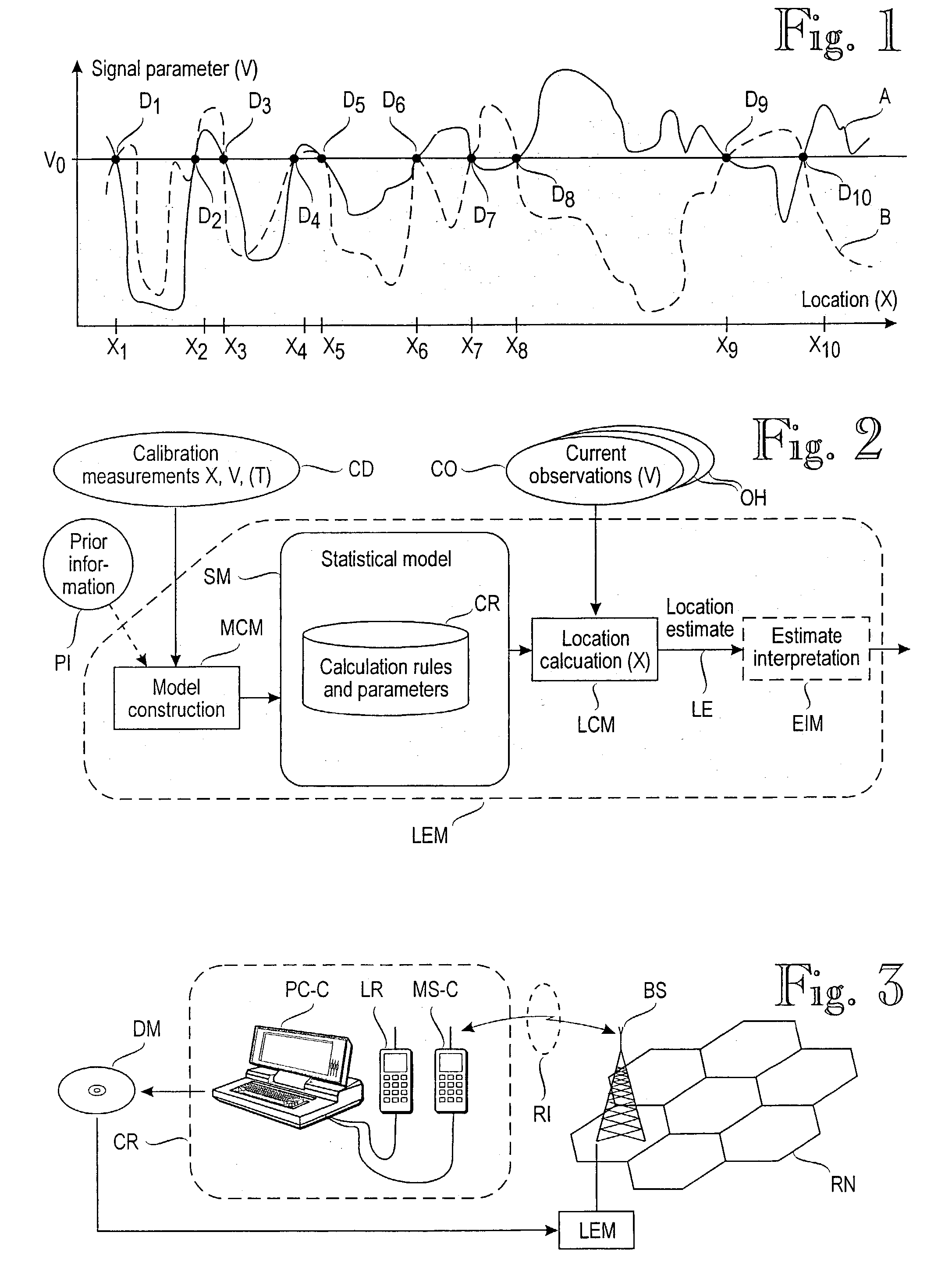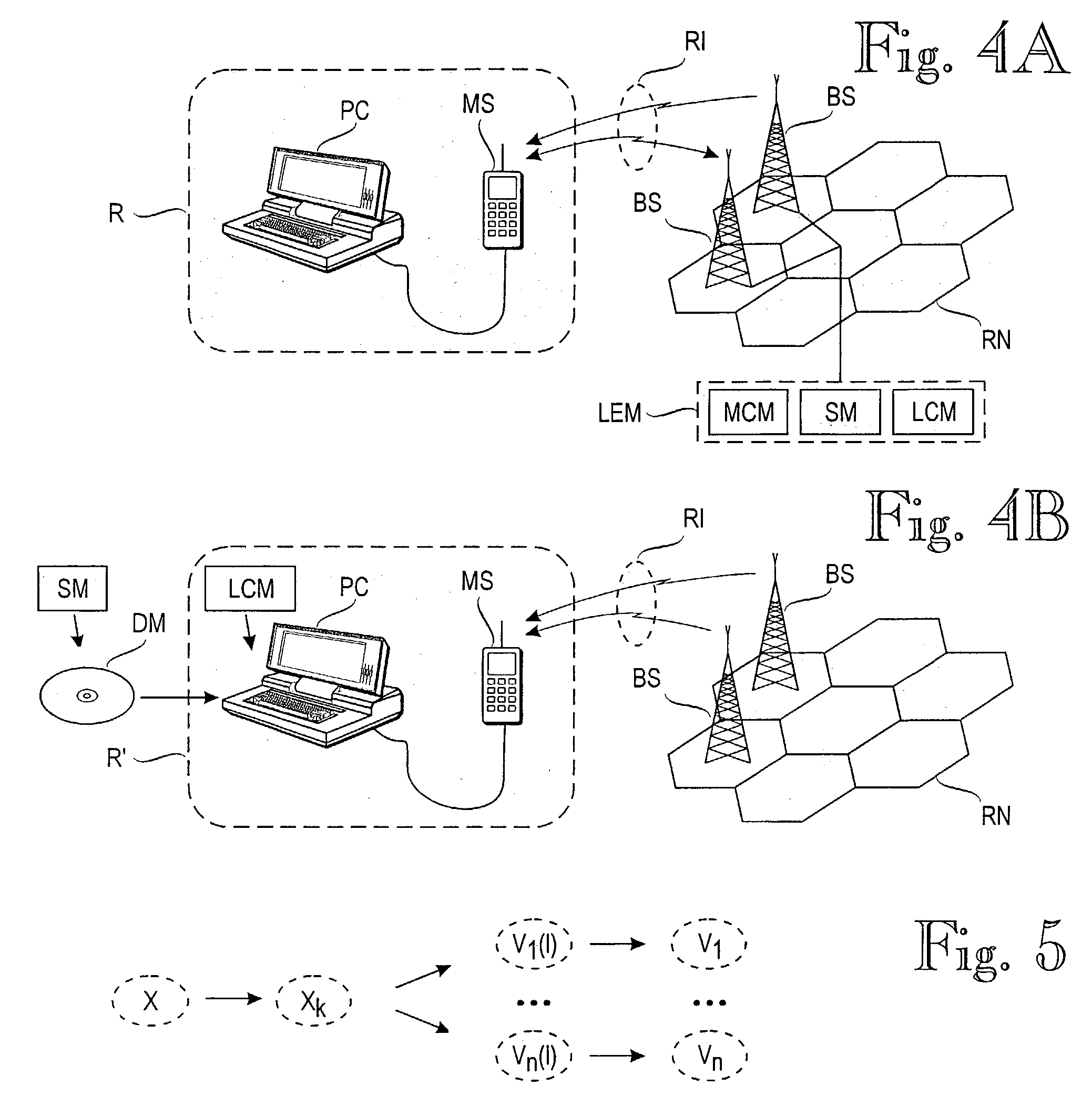Location estimation in wireless telecommunication networks
a wireless telecommunication network and wireless technology, applied in the direction of frequency-division multiplex, transmission monitoring, instruments, etc., can solve the problem of rapid degradation of data bases
- Summary
- Abstract
- Description
- Claims
- Application Information
AI Technical Summary
Benefits of technology
Problems solved by technology
Method used
Image
Examples
performance examples
Example 1
Location Estimation with a Naïve Bayes Model
[0081]The subareas X under consideration are the locations where the calibration data was collected. The radius of the locations is assumed to be one meter, although any unit can be used. The observational variables V are taken to be discrete with m values. The value of m can be a constant (eg 3), or it can be optimized by using one of the weighting functions described above. The boundary points between the intervals can be determined so that the number of training samples within each interval is the same (equal-frequency discretization), or alternatively, the intervals can be made of equal width (equal-width discretization). The intervals can also be determined by using a clustering algorithm, such as the K-means algorithm.
[0082]One model structure M is used: the observational variables V1, . . . ,Vn are assumed to be independent, given the value of the location variable X. The data is assumed to be independently and identically ...
example 2
Location Estimation with a Mixture of Histograms Model
[0085]The location variable X is taken to consist of two coordinates (one or three coordinates are also possible) on a fine-grained, discrete scale. The resolution of the scale can be, for instance, one meter. The observational variables V1, . . . , Vn are taken to be discrete with the maximum resolution determined by the measuring device, e.g. 1 dBm. We denote the combination of V1, . . . , Vn by V. Missing values are replaced by a value which is smaller than any possible observable value. Several models are considered. Each model Mkl is associated with parameters k, l, and θkl whose semantics is described below.
[0086]FIG. 5 illustrates the structure of model Mkl. The value of variable Xk is obtained from the value of variable X via discretization into k values. The conditional distribution of variables V1(I) , . . . , Vn(I) given the value of Xk is described by model parameters θkl. Each Vi, where i belongs to the set {1, . . ....
PUM
 Login to View More
Login to View More Abstract
Description
Claims
Application Information
 Login to View More
Login to View More - R&D
- Intellectual Property
- Life Sciences
- Materials
- Tech Scout
- Unparalleled Data Quality
- Higher Quality Content
- 60% Fewer Hallucinations
Browse by: Latest US Patents, China's latest patents, Technical Efficacy Thesaurus, Application Domain, Technology Topic, Popular Technical Reports.
© 2025 PatSnap. All rights reserved.Legal|Privacy policy|Modern Slavery Act Transparency Statement|Sitemap|About US| Contact US: help@patsnap.com



